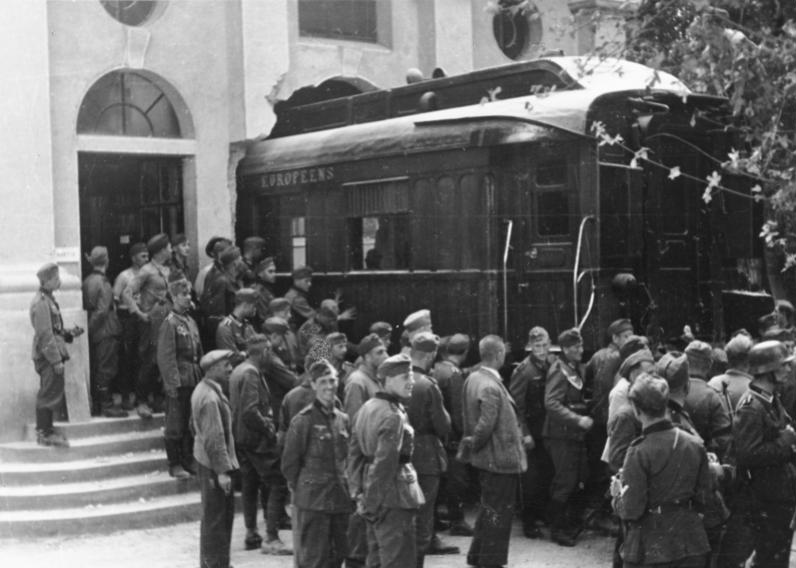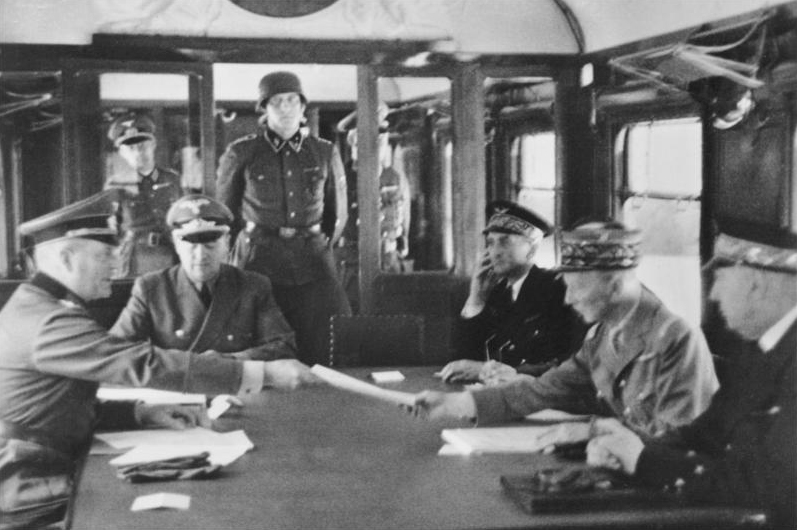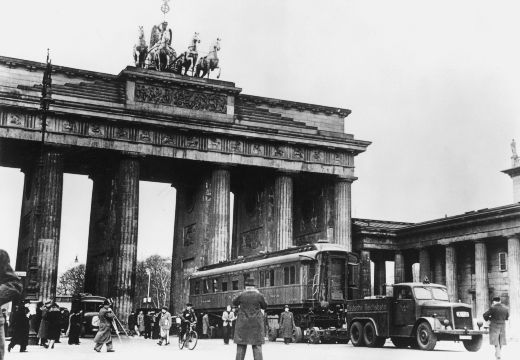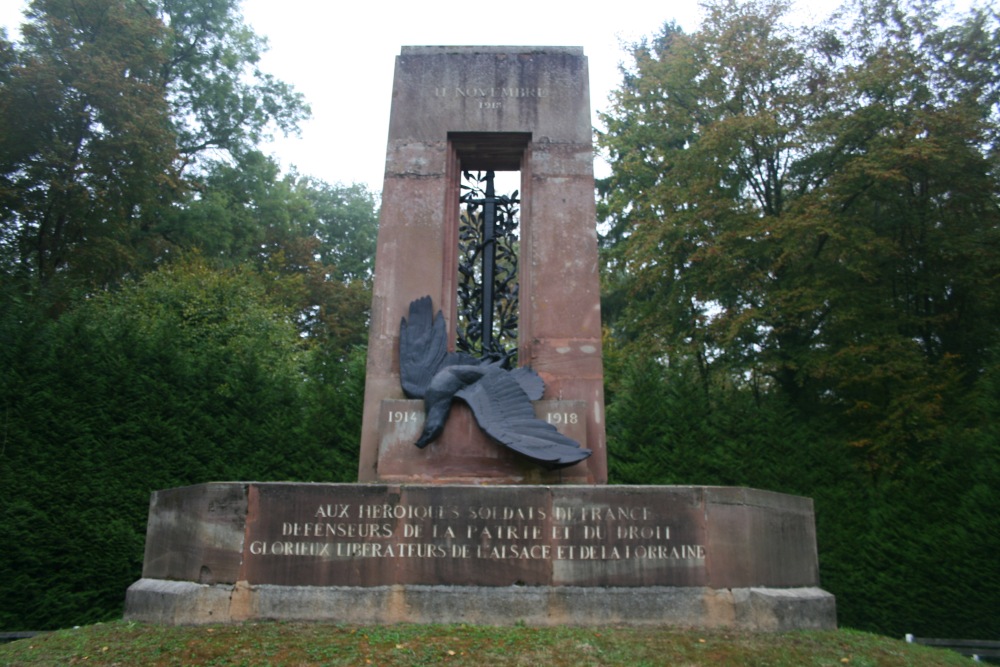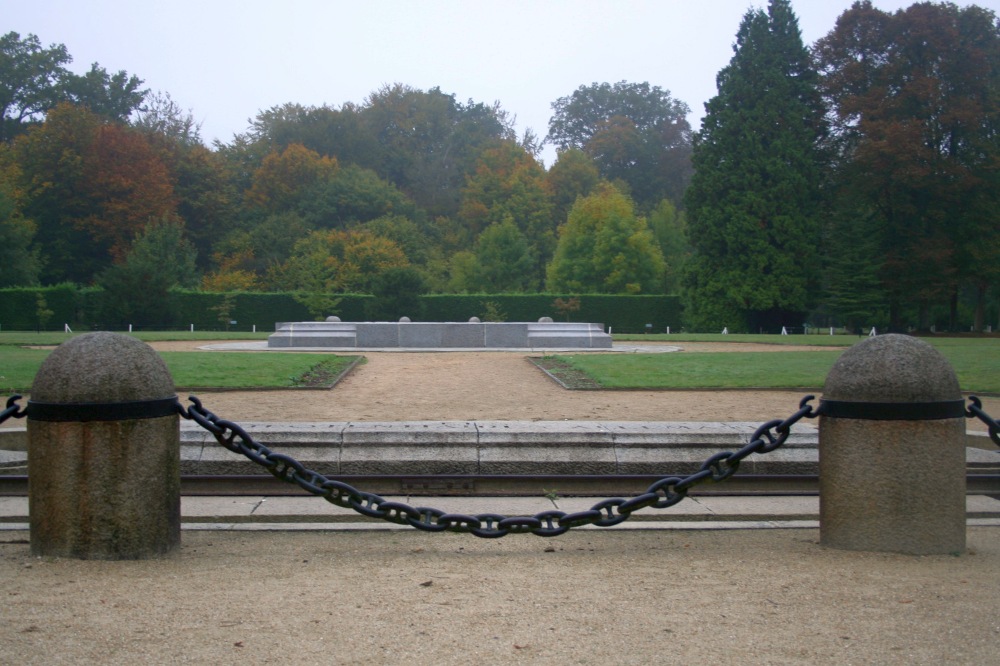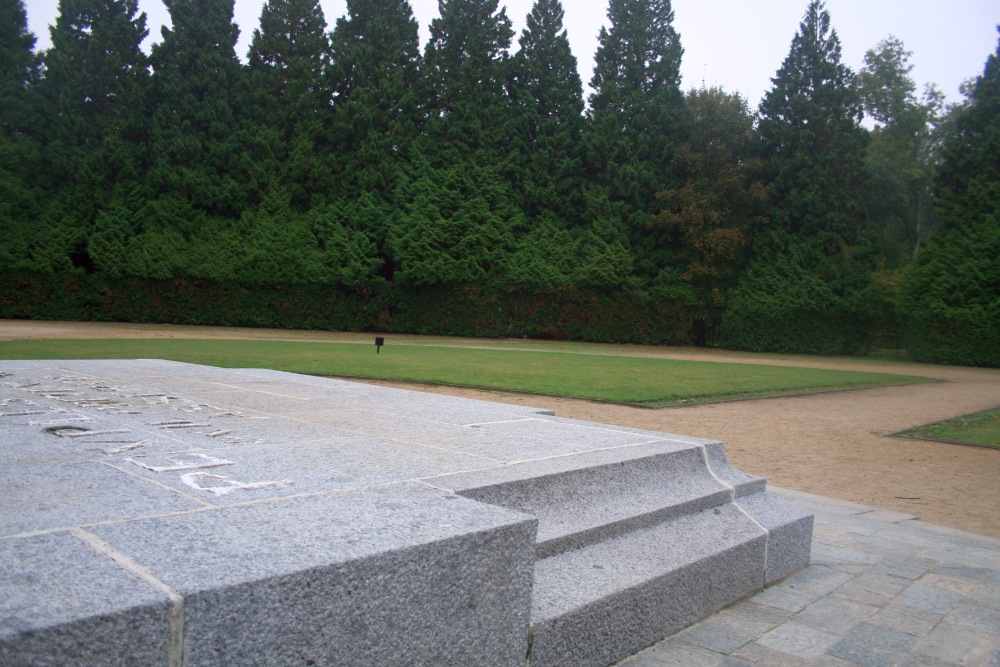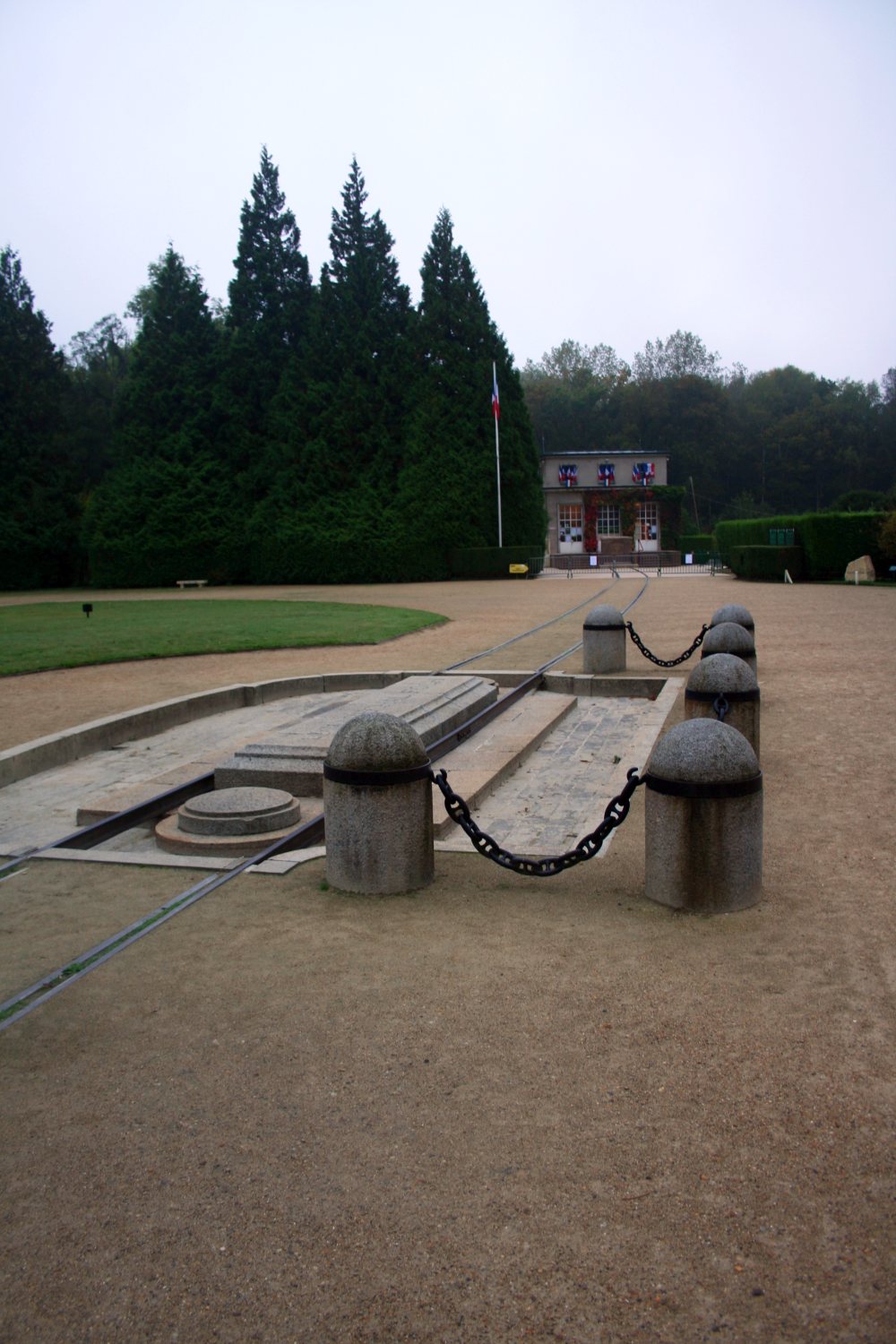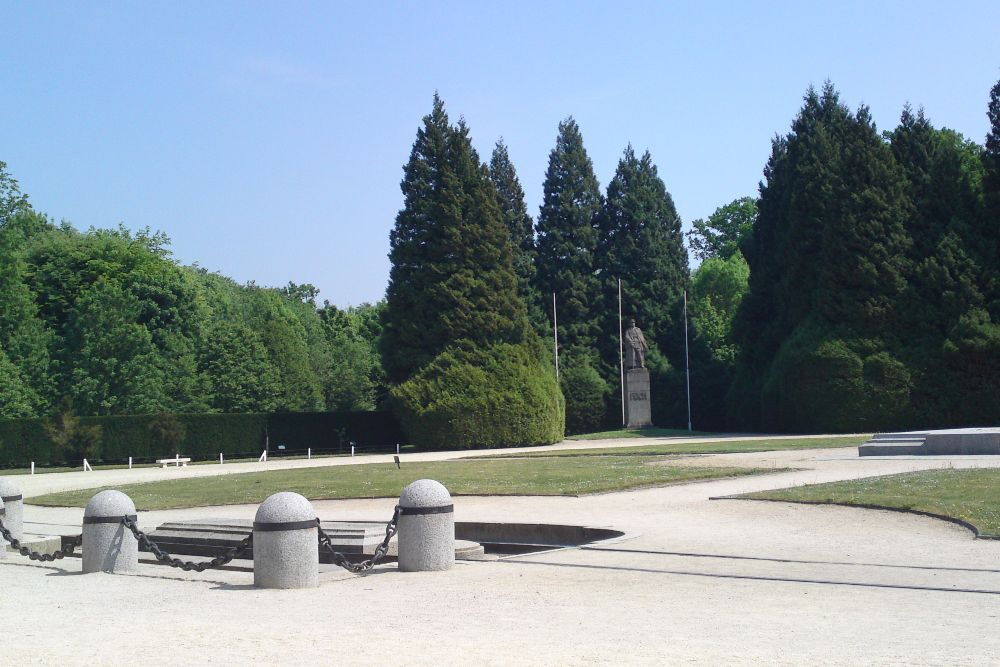Introduction
The First World War came to end in a forest in Compiègne, north of Paris. The French and the Germans sat facing each other in a train carriage. Hitler considered this an insult he wanted to eradicate as quickly as possible. When his armies had overrun the French in 1940, he thought he wanted to do the same by having the French sign the armistice at exactly the same location on June 21, 1940. His rants against the subsequent Treaty of Versailles, imposed on Germany, had been a recurring subject in the speeches he had held in the period in which he had evolved from an unknown into an increasingly popular figure in Bavarian and German politics. And now he turned the tables.
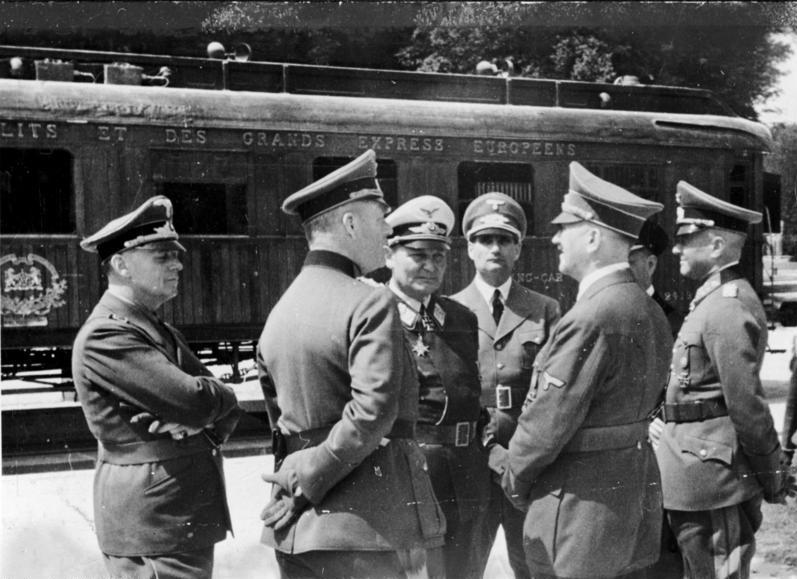
Nazi big wigs in front of the railway carriage in Compiègne. F.l.t.r.: Joachim von Ribbentrop, Wilhelm Keitel, Hermann Göring, Rudolf Hess, Adolf Hitler, Erich Raeder, Walther von Brauchitsch, June 21, 1940 Source: Bundesarchiv, Bild 183-M1112-500 / CC-BY-SA 3.0
Definitielijst
- First World War
- Took place from 1914 till 1918 and is also named The Great War. The conflict started because of increased nationalism, militarism and neo-colonialism in Europe. Two alliances battled one another during the 4-year war, which after a dynamic start, resulted into static trench warfare. The belligerents were the Triple Alliance (consisting of Great-Britain, France, and Russia; later enlarged by Italy and the USA, amongst others) on the one hand and the Central Powers (consisting of Germany, Austria-Hungary, Bulgaria and the Ottoman empire) on the other hand. The war was characterized by the huge number of casualties and the use of many new weapons (flamethrowers, aircraft, poison gas, tanks). The war ended in 1918 when Germany and its allies surrendered unconditionally.
On new tracks
The carriage, number 2419D, still existed. It stood in a hall near the historical spot in the forest of Compiègne. The front of the building had been bricked up so the carriage couldn't be taken out. As Hitler wanted to have the carriage back on the same spot where it had stood in 1918, German workers had to tear down the wall of the building. When the French turned the area into a memorial site, they had raised the terrain to a level above the former tracks. Consequently, the Germans had to improvise fresh tracks to move the carriage to the desired spot. In 1918, there had been two carriages, a German and a French. This time around, there would be only one: the original French carriage.
Rehabilitation for the Germans
On June 21, 1940, at 15:15, Hitler arrived on the site with Hermann Göring, Erich Raeder, Walther von Brauchitsch, Wilhelm Keitel, Rudolf Hess and Joachim von Ribbentrop. They got out of their cars in front of the Alsace-Lorraine monument, consisting of a sword stabbing a bird which represented Germany. Hitler saw nothing of it as the Germans had draped swastika flags over the statue and the inscription.
In pictures, Hitler can be seen walking along the wide avenue to the carriage. In the center of the clearing in the forest was a slab of granite with an inscription about the criminal German pride that was defeated here. Hitler read the French text, then proceeded to the carriage. After Hitler had entered, the French delegation arrived. In order to humiliate them, Hitler sat down in the chair which had been occupied by Maréchal Ferdinand Foch in 1918. From the moment the French entered the carriage, Hitler kept silent. He nodded to Keitel who subsequently started reading the armistice agreement. When Keitel had finished, Hitler left the carriage with his entourage and strode back along the avenue to the cars. The French were left behind with Keitel who conducted the remainder of the negotiations.
Definitielijst
- swastika
- Equilateral cross, symbol of Nazi-Germany.
Doubts
Joseph Goebbels, in Berlin at that time, wrote in his diary he doubted whether the French would agree as the negotiations dragged on until 18:00 and proceeded awkwardly. According to Goebbels, it had been agreed the French would make clear whether they agreed or not the next morning. That didn't occur either. While at some places in France, fighting continued nonetheless, it took until 18:50 before the French signed the armistice. Subsequently, France was to be split in two: one part was occupied by the Germans and the other was turned into a puppet state controlled by the Germans.
Destruction
After Hitler had left, the Germans demolished several items on the spot where the armistice was signed. That of course pertained to the texts and the symbols on the monuments indicating the German defeat in 1918. The hall in which the carriage had been on display, was blown up, just like the granite slab in the center of the clearing with the 'provocative' inscription. The monument of the sword and the bird was disassembled and taken to Germany. The carriage was relocated as well. It was loaded onto a heavy lorry and driven to Berlin. where it was put on display in the Lustgarten
The end of the Compiègne train carriage
The original carriage never returned to the forest of Compiègne. It had allegedly been completely demolished during a British bombardment on Berlin as early as 1943. Or had it remained undamaged and was it taken to Thuringia as late as 1944? A teacher from the Ohrdruf region investigated and claimed the carriage must have been parked on a siding between Ohrdruf and Crawinkel where it was ultimately destroyed. How and where is unknown but he found remains of the carriage. He found a badge of the train, a dinner plate and two bronze arm rests at the homes of a few inhabitants from the vicinity of Ohrdruf which are now on display at the memorial site in Compiègne.
Not a single agreement has been signed at the table in the carriage which is there now. During the post-war restoration of the site, the granite monument with the text once read by Hitler has been put back. The small building housing the carriage was rebuilt as well. The monument of the sword and the bird was tracked down in Germany and put back also. And the carriage? It was replaced by a similar type.
Information
- Article by:
- Sjoerd de Boer
- Translated by:
- Traci White
- Published on:
- 07-03-2021
- Last edit on:
- 14-03-2021
- Feedback?
- Send it!
Related sights
Related books
Sources
- BELOW, N. VON, Als Hitlers Adjudant 1937-1945, Pour le Mérite, Selent, 1999.
- KERSHAW, I., Hitler - Vergelding 1936-1945, Het Spectrum, Utrecht, 2003.
- REUTH, R.G., Joseph Goebbels Tagebücher 1924-1945, Piper, München, 2008.
- ‘The Armistice’, in: After the Battle, nummer 14
- ‘Das Ende des Salonwagens von Compiègne’, website: Arnstadt Geschichte
